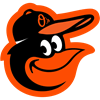With the NBA regular season right around the corner, our team is gearing up to provide you with our usual complement of DFS coverage.
Whether you're an NBA DFS novice or a seasoned pro, it's important to know some of the foundational concepts that can help you succeed this season. Since most of us are knee-deep in DFS football pursuits, it's imperative that we adjust our approach when tackling the NBA. While every sport presents some similarities in strategy, the NBA has its own vocabulary and metrics that make it unique. In many cases, it provides a more measurable way of determining optimal play.
Unlike football, where a third-string tight end can break a slate with a three-touchdown day, basketball tends to be a bit more predictable. No single player can run off a large chunk of fantasy points with one catch or one long run. Although big, double-digit swings are unlikely in a vacuum, NBA game flow moves at the quickest pace of any DFS endeavor. Rosters can generate 300-plus fantasy points on a regular basis. Due to the breakneck pace of basketball, new statistical data comes into play that is crucial to lineup construction.
But first, we'll look at some cornerstone philosophies that particularly apply to NBA DFS.
Bankroll Management + Contest Selection
The adage don't wager more than you can afford to lose may be overused, but it's probably the best advice you can give to a DFS player. The advertisements that tout claims like Win ONE MILLION DOLLARS Tonight
With the NBA regular season right around the corner, our team is gearing up to provide you with our usual complement of DFS coverage.
Whether you're an NBA DFS novice or a seasoned pro, it's important to know some of the foundational concepts that can help you succeed this season. Since most of us are knee-deep in DFS football pursuits, it's imperative that we adjust our approach when tackling the NBA. While every sport presents some similarities in strategy, the NBA has its own vocabulary and metrics that make it unique. In many cases, it provides a more measurable way of determining optimal play.
Unlike football, where a third-string tight end can break a slate with a three-touchdown day, basketball tends to be a bit more predictable. No single player can run off a large chunk of fantasy points with one catch or one long run. Although big, double-digit swings are unlikely in a vacuum, NBA game flow moves at the quickest pace of any DFS endeavor. Rosters can generate 300-plus fantasy points on a regular basis. Due to the breakneck pace of basketball, new statistical data comes into play that is crucial to lineup construction.
But first, we'll look at some cornerstone philosophies that particularly apply to NBA DFS.
Bankroll Management + Contest Selection
The adage don't wager more than you can afford to lose may be overused, but it's probably the best advice you can give to a DFS player. The advertisements that tout claims like Win ONE MILLION DOLLARS Tonight or Become a Millionaire OVERNIGHT are certainly persuasive copy, but it doesn't tell the whole story.
While it's possible to throw up one lineup in a Millionaire Maker and come down with a first-place score, there are several factors stacked against you from the outset. For starters, DFS pros max out the lineup requirement of 20 or 150 on a nightly basis, often spending $5,000 or more per slate. With exposure to almost every player available, they have a leg up on the competition right off the bat. Can one lineup beat them all? It can, but the chances are high that these pros have a copy of your lineup already, so what looks like a win can be severely diluted, as the top prize is split up among the identical winning lineups. That's an even more likely outcome in the NBA, where you have fewer players to choose from, even in a 12-game slate.
Is DFS fun to play? Absolutely. Is it profitable? If you understand the nuances and have a moderate tolerance of risk (variance is a better term), you can utilize your bankroll and grind your way to a sizable profit. This is especially true for the NBA, which many agree is the easiest nut to crack as a DFS sport.
There are two schools of thought when it comes to optimal DFS profitability in relation to bankroll management.
One option is to focus a large part of your investment in single-entry cash game lineups (50/50s, head-to-heads, etc.) to avoid your exposure to multi-entry contests, and use a smaller percentage to take shots in GPP (Guaranteed Prize Pools) tournaments. So, let's assume you can afford to lose $20 a night. This means you would spend about $15 on cash games, use a chalky (highly-rostered) lineup for those contests, and then use a contrarian approach with your remaining $5, ideally with five different lineups in a $1 or $.0.25 tournament.
Alternatively, you could use an MME (mass multi-entry) approach: Taking the $20 and plugging 20 unique lineups into a GPP.
I use the second method far more frequently in NFL contests, but I often employ the first method due to the lower variance in the NBA. Ultimately, this comes down to personal preference. If you're the type to fire up a $20 Milly Maker because it's fun, that's great. However, if you're going to approach DFS with an aim to combine fun and profitability, taking that route is a almost always a guaranteed path to failure.
We've already mentioned that NBA DFS-play has less variance than the NFL or MLB. Let's now discuss why it's different and the metrics we can use to maximize our success.
Lineup Construction
Unlike the NFL, where the aforementioned tight end can pop out of nowhere, you won't see this kind of thing happen very often in the NBA. By and large, every NBA team will have three to four impact players per night. The reasons for this are obvious -- the NFL fields 11 players, with five or six players possessing the potential to accrue points on any given play (and often multiple players -- more on that in a bit).
Simply put, in NBA DFS, the onus of fantasy production is in the hands of fewer players, and they aren't capable of scoring, say, 10 points on a single play either (a 30-yard touchdown catch in an NFL PPR format). So even if a guy comes off the bench and has an excellent night, his ability to hurt you isn't as significant as a third-string tight end. Also, the probability that you have coverage on this backup player is more likely, because we have a salary cap to contend with, and we'll need to find value in second-unit players.
There are several ways that lineup construction is similar to football, however. Correlation (or stacking) is still a primary tool in the NBA, although the distinction is a little more nuanced. A properly correlated NBA lineup focuses on finding spots where points can be gained via a single possession. In the NBA, this means pairing an assist-producing guard with a power forward or center who can convert that assist to points. A bad correlation would be using a first and second-unit player at the same position on the same team. Just like a QB-WR connection, the NBA possesses similar relationships.
As far as team stacks go, it's possible to go that direction in a high-paced contest, but it's something that you usually want to do in a GPP. Loading on one team doesn't work out well in cash games because if things don't go your way, you have no chance of cashing.
Value is another way of categorizing players, and it's a term you will see widely used if you read most industry advice columns. When you read that a player has 5x value, or something similar, you are reading a simple calculation:
Value = Player's salary/Player's projected fantasy points
The determination of what is "good value" or "bad value" is open to interpretation. But based on lineup construction and salary cap constraints in NBA DFS, an overall value of 5.0 or higher is considered to be an optimal baseline for this metric, which is little more than a way of analyzing player's output relative to their salary. It's also optimal to reverse the equation and decide if a player's projection is reasonable, assuming he reaches 5x value or higher.
Odds and Spreads
Before you even begin researching players, looking at the point spreads and over/under totals -- found at reputable sportsbooks like Fanduel or DraftKings -- is where you should begin your builds. However deep you dive into analysis, you can bet the bookmakers have done more, and if you're a frequent sports bettor, you know how freakishly accurate they can be.
For DFS purposes, we are looking for high totals and narrow spreads as games to target. For the NBA, good totals are usually 225 points and higher, and we're also looking for spreads below 10 points, if not lower. We want to increase our exposure to these games and limit exposure to games with lower totals and blowout potential, although the wide spreads offer an opportunity to find value with second and third-unit players. Talking about game totals leads us to another key stat that is unique to basketball.
Pace
Put simply, pace measures how many possessions a team will have, on average, in any given game. If a team has a quick pace, it creates more opportunities to rack up fantasy points. Using pace by itself isn't usually wise, however.
While it's important to know if a game is a pace-up matchup -- a game in which a slower-paced team is facing a very high-paced team -- the defense's potential for output can be just as plentiful with a team that plays slower and converts fewer baskets. In theory, this leads to elevated potential for stats like rebounds and steals. I like to pair pace with another popular measurable: defensive efficiency.
Offensive and Defensive Efficiency
If you play on DraftKings, you will always see a number next to a player's name and salary that illustrates a DvP (defense vs. position) ranking. The numbers are also conveniently color-coded in green for a low-ranking and red for a high ranking. By and large, it's best to avoid looking at these numbers because it's an oversimplification of the facts.
There is a less-obvious advantage to these numbers, however. You can often find less-popular players by avoiding the green when possible, as the designation sways many DFS managers. A much better way to judge how a defense will play is by determining how many points a team will allow per 48 minutes or per 100 possessions.
Conversely, it's important to project how many points a team will typically score by the same metric. Both numbers work fine, although using per-possession data is typically a bit more reliable, and it's easier to adjust for a projected rise or drop in pace of play. By utilizing these numbers, you get a better idea of which games to target -- especially on nights with double-digit games on the slate.
Usage Rate
Is there a way to drill down to individual players with these numbers in mind? There sure is. Usage rate is one of the best ways to research and project a player's impact in any given game. Defined as an estimate of the percentage of team plays used by a player while he was on the floor, usage rate takes into account field goal attempts, turnovers and free throws generated. So if James Harden has, say, a 35% usage rate, that means when he's on the floor, 35% of his team's possessions end with Harden attempting a shot, getting to the free throw line, or turning the ball over.
If a given player has a high usage rate, he'll likely have plenty of offensive opportunities. RotoWire has taken our analysis of usage rate a step further with our On/Off Court charts. You can use these charts to determine the fluctuation of usage when a certain player is out or limited by injury, and it is a great way to estimate who might get the biggest boost during an absence.
Projected Rostership
At RotoWire, we used the term rostered, or rostership, when referring to the overall popularity of a player on a given DFS slate. Another way of naming a popular player is calling them a chalk player -- a term you'll hear often in DFS circles. Your goal, especially in GPP play, is to strive for uniqueness in your lineup construction. In some cases, going with James Harden because he has a great matchup is the ideal way to go -- even if his rostership is 50 percent. Especially in 50/50 contests, you'd risk falling behind the pace if you don't have Harden in your lineup.
As long as you've diversified your lineup so that less-popular choices are mixed in, utilizing a few chalk players is fine and usually an inevitability. A dangerous pitfall to overthinking rostership projections is getting too unique with your selections in an effort to separate your roster from the field. To put it plainly: don't expose yourself to high variance with players who will almost never reach value. Most slates have enough options that you can find efficient players who are less popular without breaking your entire slate.
Chalk situations are often created by injuries when a secondary player is projected to be elevated to a larger role. It goes without saying that you need to keep your ear to the ground until lineup lock for updates on any key injuries or lineup changes.
A brilliant DFS player I learned a great deal from once told me: "If you can't be around for tip-off, you shouldn't play that day." That may be slightly extreme, but it's pretty accurate. If you can't make late swaps based on breaking news, it might not be a good day for you to play the slate.
Injury chalk does have its drawbacks, however. A common mistake is to play every injury situation you can find and avoid the obvious chalk that is there on a nightly basis. Let's say I find out that Bam Adebayo is out and Kelly Olynyk is starting in his spot (with a much lower salary). That's a pretty good swap. But would I go for that switch if I can still afford Karl-Anthony Towns against the Hawks? Probably not. A good rule of thumb is to make injury pivots when the numbers show a huge advantage or when the price downgrade will offer you a value opportunity at another position.
Make Your Own Calls
A final golden piece of advice is to find a system that is comfortable for you and stick to it -- but always leave room to learn more. Some people like to look at every player and make their own projections. Others prefer to skip through and rely on other sources. Some players want to read every advice column out there, and some want to ignore them, so they aren't influenced.
There's no right or wrong way to approach DFS play because everyone's goal is different. But the universal goal is to make it an enjoyable experience. If you are focused on being the best and most profitable player out there, we've provided some great tools to use, and RotoWire provides access to all of the metrics we've mentioned here -- and so much more.



































